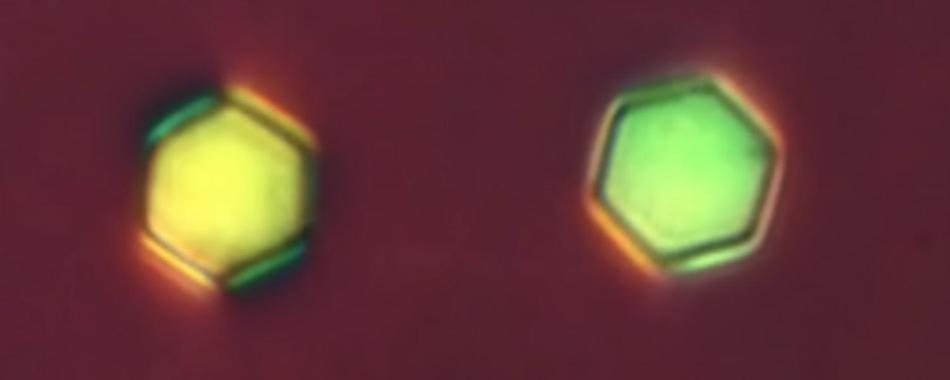May 30 2019
Soon, scientists may be able to develop atoms as per the specifications with the push of a button.
 These hexagonally-shaped grains of silica, when suspended in a liquid crystal, may resemble elements in the periodic table. (Image credit: Smalyukh lab)
These hexagonally-shaped grains of silica, when suspended in a liquid crystal, may resemble elements in the periodic table. (Image credit: Smalyukh lab)
It is still the matter of science fiction; however, a group of researchers from CU Boulder reports that it is getting closer in terms of controlling and assembling particles known as “big atoms.”
The new study, reported in Nature on May 29th, 2019, focuses on colloidal particles that, when combined with liquid crystals, behave more like the elements of the periodic table. These particles provide physicists with the chance to explore how hydrogen, helium, and other atoms act and interact without needing to diminish to the atomic level.
For instance, the team demonstrated that by exposing the big atoms to various types of light, it could flip their charges with a tap of a switch. Simply put, the particles that once attracted each other now repel each other.
Because we have so much control, we have the ability to design how these particles assemble and what properties they have. It’s like a designer toolkit.
Ivan Smalyukh, Professor, Department of Physics, University of Colorado
Mimicking Atoms
That designer toolkit starts with a simple component: liquid crystals.
These materials, which offer the crisp images on your smartphone screen, are usually composed of molecules in orderly arrangements, for example, rods that all point in the same direction. However, for the past 10 years or so, researchers have noted something strange about these fluid-like materials. If particles, such as microscopic grains of silica, are dropped into liquid crystals, the previously ordered molecules inside will bend and squish to accommodate the new additions—somewhat like pushing a football lineman into an already-crowded subway car.
Moreover, surprisingly, the manner in which those liquid crystals bend can be mathematically similar to the structures of the electron shells of atoms.
“How the liquid crystals bend around the particles is very important,” stated Smalyukh, also in the Materials Science and Engineering Program and Department of Electrical, Computer, and Energy Engineering. “When you disrupt those molecules, it costs energy, and that energy drives interesting interactions.”
The liquid crystal molecules must be bent in just the proper manner and the bits of silica will clank into each other such that they were two atoms bonding together, but much larger.
Smalyukh stated that the issue is that so far, researchers had very little control over those big atom interactions. His team had the solution.
Flipping Charges
To create their distinctive colloidal mixture, Smalyukh and his teammates employed hexagonal pieces of silica for their big atoms. However, prior to dropping those particles into liquid crystals, the scientists applied a kind of dye that spins when subjected to different types of light.
When the scientists exposed their mixture to a specific type of blue light, the liquid crystal molecules would bend around the hexagons following a single pattern. If a different type of light is used, they would bend in a completely different manner.
The team stated that they could change a big atom’s effective charge from positive to negative and back again in a swish.
It’s almost like you can shine light and turn matter into antimatter.
Ye Yuan, Study Lead Author and Postdoctoral Researcher in Physics, CU Boulder
Postdocs Qingkun Liu and Bohdan Senyuk are the other coauthors.
Furthermore, Yuan reported that the team was able to control those interactions with the help of an ordinary lamp with a filter on it without needing any high-powered lasers.
“In principle, we could have a good sunny day in Colorado and bring our samples outside and see those interactions,” stated Yuan said.
This gets him thrilled for what the team could create with these big atoms. The scientists think that, with the appropriate changes, they could use their technique to arrange particles in distinctive ways, developing faux-atomic structures that are not present in nature—then dissolve those structures just as easily.
“In some ways, we still need to figure out what we can do with this,” Smalyukh said.